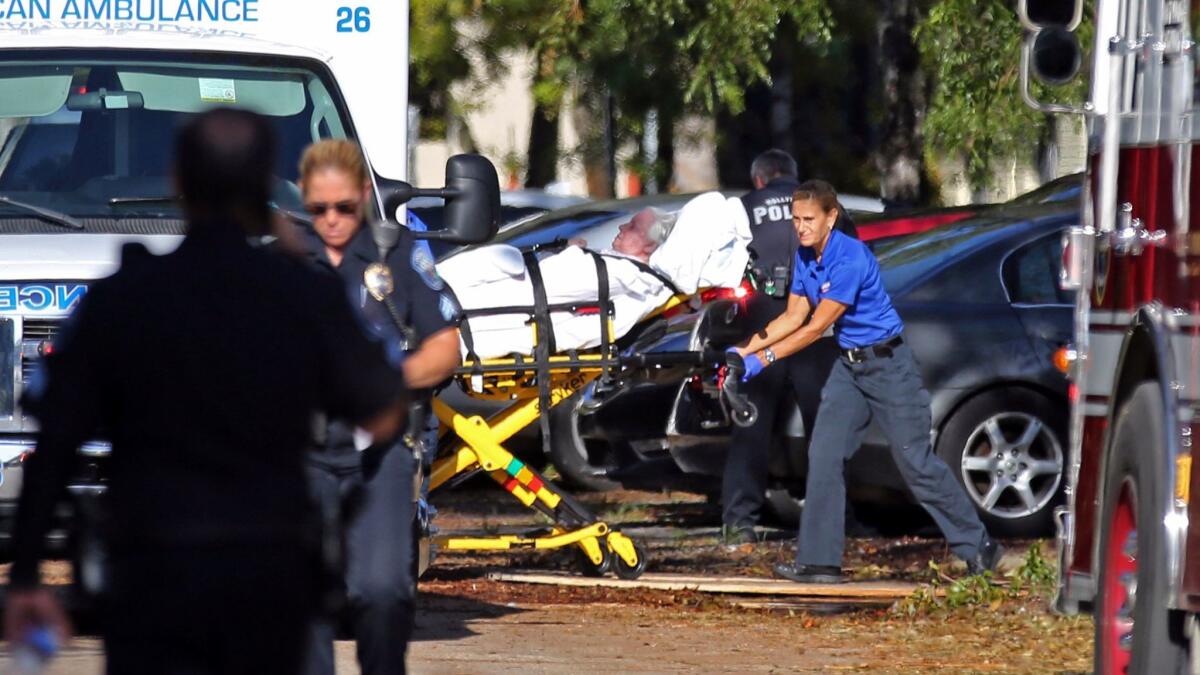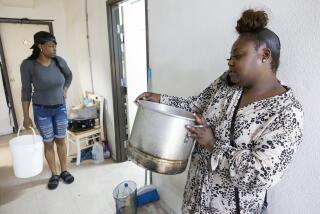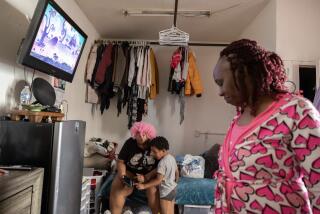Top floor was deadliest at two-story Florida nursing home with no air conditioning after Hurricane Irma

Reporting from HOLLYWOOD, FLA. — They were mostly very old and sickly. But at least 10 of the 12 residents of the Florida nursing home who died after Hurricane Irma had another factor in common — they lived on the building’s top floor, where the heat was the worst and most windows were left unopened.
It wasn’t until the morning of Sept. 13, shortly before dawn, that staff at the Hollywood rehabilitation center contacted the director of nursing at her home and told her people were deteriorating and dying. She immediately told them to move the residents from the second floor downstairs, where it was cooler, according to the nursing home.
By then it was too late.
“A lot of them died in an ‘oven,’ ” said attorney Gary M. Cohen of Boca Raton, Fla., who is handling five negligence cases against the Rehabilitation Center at Hollywood Hills on behalf of survivors and families of the dead. “It’s not the way to go. This is not how it’s supposed to happen in a nursing home in the 21st century.”
Hurricane Irma knocked out a transformer that powered the central air conditioning at the 152-bed, two-story facility near Miami on Sept. 10, leaving residents for days to cope in suffocating heat.
As bodies were pulled out of the nursing home three days later, Hollywood Police Chief Tomas Sanchez told reporters the building was “extremely hot” on the second floor. He would not say then whether all of the victims lived on the second floor, citing a newly launched criminal investigation.
Now, the Sun Sentinel has confirmed through friends and family of the dead that all eight who died on Sept. 13 had lived on the top floor. Two of the four people who died in later days also had lived on the second floor.
The second floor housed the sickest, long-term care residents, some with dementia and others who were bedridden or receiving hospice care. Downstairs, the nursing home cared for a mix of people, including those who might eventually go home again after recuperating from a stroke, joint replacement or other setback.
Before the storm hit, the nursing home told residents and their families they would not be moved and would be safe there. Studies show that evacuating very old people from nursing homes poses its own dangers: increasing the risk of hospitalization and death. But the Hollywood facility, like many others, had no generator to run the air conditioner in a power failure. The state does not require it.
During the three days the air conditioning was inoperable, no staff members ordered the building emptied or the residents moved across the street to Memorial Regional Hospital, only steps away, which had air conditioning, power and medical care. When rescuers began to discover the dead in room-to-room checks, it was clear that the people in the most critical condition were on the second floor.
“We have a Signal 7 in Room 229,” Hollywood Fire Rescue units said of 92-year-old Miguel Antonio Franco, using their code for a deceased person, according to emergency radio calls provided by the audio streaming website Broadcastify.
Another paramedic announced that there “is going to be medical triage on the second floor.”
Shortly before 7 a.m. came the radio call of another body: “We have an additional Signal 7 in Room 226.” A few seconds later, emergency crews radioed another death, and then an official said: “You’re going to need to keep track of these.”
At one point a rescuer announces: “All patients accounted for on the first floor, green,” signaling that they were all alive on the lower floor.
Some of those from the second floor had body temperatures, before or at death, ranging from 107 to 109.9 degrees, according to state regulators. Normal body temperature is considered to be 98.6.
Workers at the nursing home had placed some residents in wheelchairs or in beds in cooler hallways, but kept others in their rooms with fans. Larger fans were placed in hallways. The nursing home also borrowed spot chillers — portable air conditioners — that were “distributed evenly on the first and second floors of the building,” according to a lawsuit filed by the nursing home, challenging its closing by the state.
The second floor of a two-story building with a failed cooling system would almost always be hotter than the lower floor, especially in Florida, said Todd Washam, director of industry and external relations at the Air Conditioning Contractors of America, a group based in Arlington, Va., that represents 4,000 companies nationwide.
How much hotter is hard to say. “There’s just so much to consider — how big are the windows, what’s the insulation like, whether there is tree covering,” Washam said.
Sanchez, the Hollywood police chief, was asked at the Sept. 13 news conference how hot it was in the building. “I’m not going to release those figures, but I can tell you it was very hot on the second floor.”
Some windows at the nursing home were open, Sanchez said, but investigators were going to look at “how many windows cannot be opened.”
The nursing home shares the same building as a mental hospital, called Larkin Community Hospital Behavioral Health Services. During the air conditioning outage, the hospital’s nursing director wrote an email to a Broward County commissioner Sept. 11 asking for help fixing the air conditioning. He explained that “because we are a psych crisis unit we cannot have open windows.” The hospital does not want its patients to escape or to jump and get hurt.
Pesantes and O’Matz write for the Sun Sentinel.
ALSO
Vice President Mike Pence in Las Vegas: ‘We are united in our grief’
The geography of death in Las Vegas: Remembering the 58 who died
More to Read
Sign up for Essential California
The most important California stories and recommendations in your inbox every morning.
You may occasionally receive promotional content from the Los Angeles Times.










